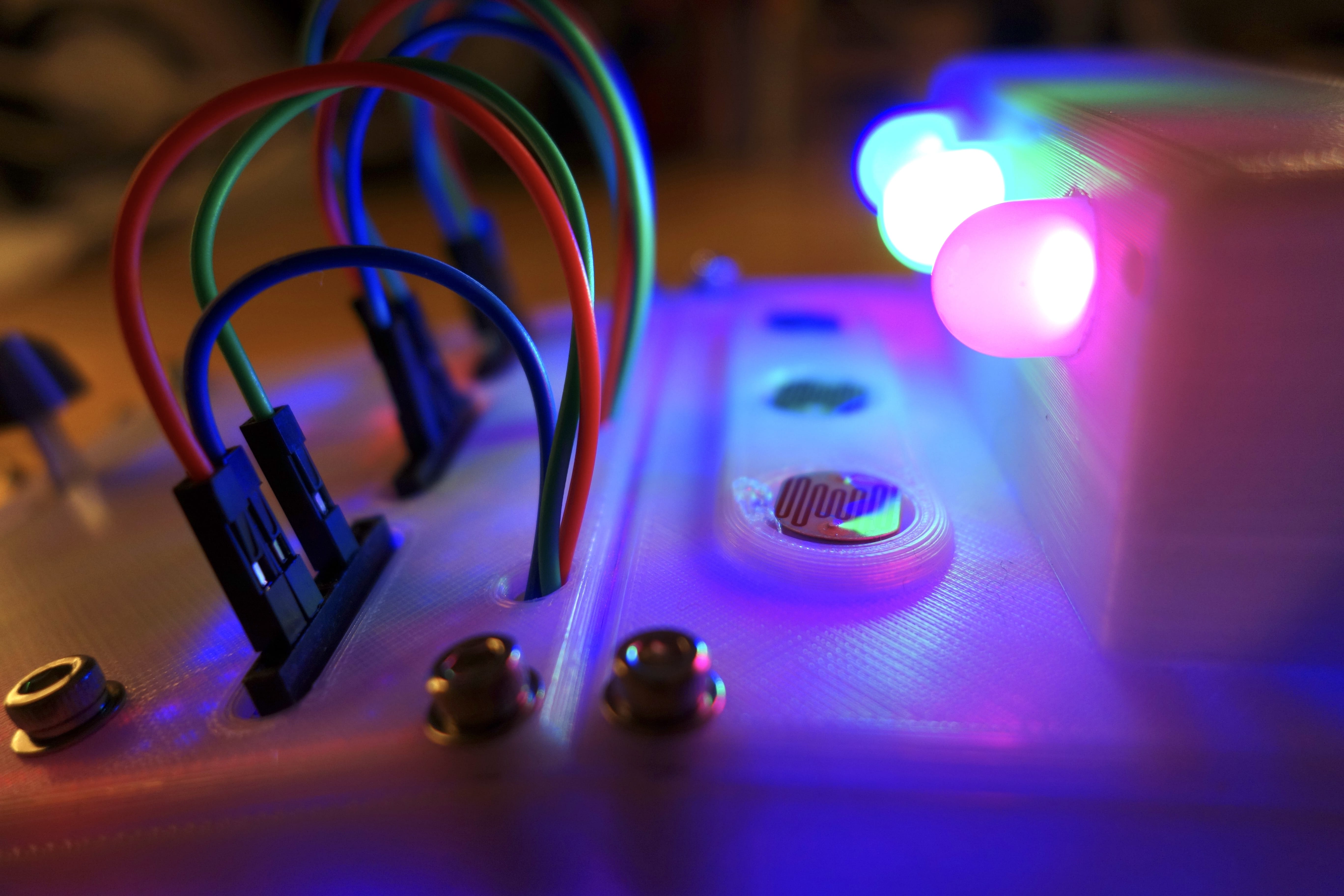Light synth
December 2023
As mentioned on some other pages, I've taken a bunch of creative electronics workshops at Dogbotic Labs. Kirk Pearson (the founder and one of the many wonderful instructors) recently wrote a book for Make: titled "Make: Electronic Music from Scratch". In it, Kirk wanted to include a bunch of cool example projects, and I got an email from them in late 2023 asking if I wanted to submit a creation to demonstrate some of the techniques they talk about in the book!
I absolutely did, and started planning a new invention that showed off some of the fun and creative circuit tricks I learned in the DIY Synths class I took. After a little sketching, a little soldering, and a little 3D printing... I made this!

What is it?
This video explains the basics, but at its core, this synthesizer lets you compose melodies with patterns of light!
- There are three oscillators (so it can play three notes at a time)
- The oscillator can be muted and unmuted with a special toggle switch: the middle position is off, and if you push it up it'll stay on, but if you push it down, it'll spring back. It's called an on-off-(on) DPDT switch, where the parentheses indicate that it's a "momentary" state. This means that you can have each oscillator just drone constantly, or you can sort of play it like a weird keyboard.
- The pitch of each oscillator is controlled by a pair of variable resistors — one is a knob, and one is a photo-resistor — its value changes when light shines on it!
- Each oscillator also has a dedicated RGB LED shining on its photoresistor (though the light does bleed onto neighboring photoresistors too). The brightness of the light influences the pitch.
- The red, green, and blue pins of the LEDs can be mapped to different patterns of being on or off by way of a tiny patch bay, and the horizontal slider controls how quickly those patterns cycle.
- By configuring a pattern of flashing colors, you're composing a little melody for that oscillator!
Fun, right?
Here are a few more glamour shots! I intentionally separated the LEDs from the photoresistors a bit so you can interrupt the light beams with your fingers to influence the sound.

I printed it in white PLA, and on the circuits inside I mounted a bunch of random decorative red and blue LEDs to provide some illumination from within. I love how you can see the shadows of the wires and protoboard (those grids of light shining through tiny holes!) and circuit components shining through the enclosure.

The circuit
Soon I'll post a schematic and a few WIP shots!